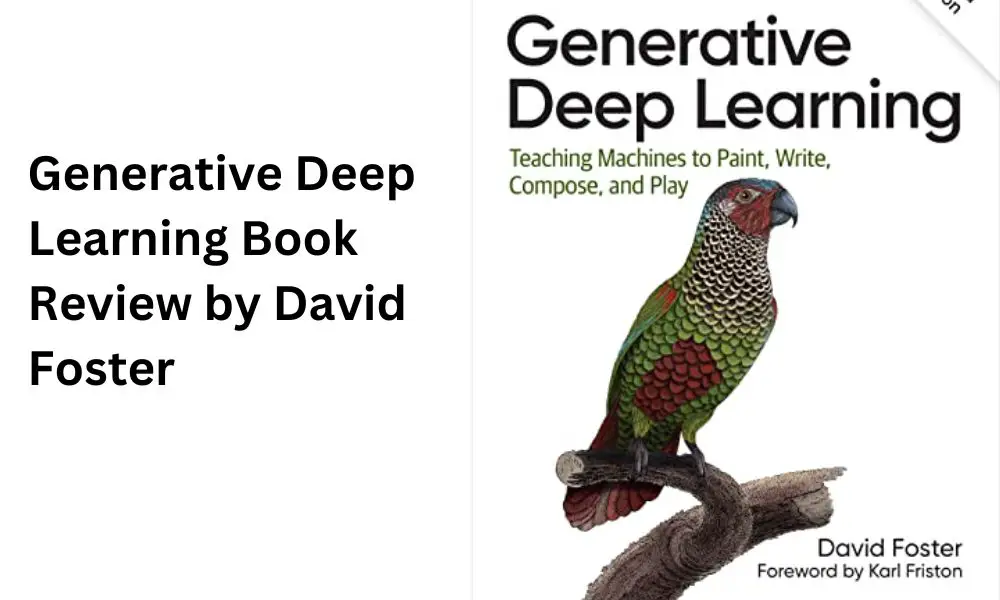Table of Contents
Introduction
Generative Deep Learning by David Foster is a captivating book that takes readers on a journey into the world of generative AI, where machines are taught to paint, write, compose music, and even engage in interactive experiences.
In this review, we will delve into the key concepts covered in the book, its writing style, strengths, and areas for improvement. Whether you are an AI enthusiast, a creative mind, or a researcher, this book offers valuable insights into the realm of generative AI.
Book Summary
“Generative Deep Learning” explores the fascinating field of generative AI, which empowers machines to create art, music, and text. The book covers essential generative models such as GANs and VAEs, providing a comprehensive understanding of how these models learn to generate creative content. With a focus on practical applications, the book showcases real-world examples of generative AI in action, appealing to both technical enthusiasts and creative individuals eager to explore the intersection of AI and artistic expression.
Book Information
| Title | Generative Deep Learning |
|---|---|
| Author | David Foster |
| Genre | Artificial Intelligence, Machine Learning |
| Pages | 368 |
| Publication Date | March 2020 |
Overview of the Book
Generative Deep Learning is a well-structured and insightful book that focuses on the power of generative models in the field of machine learning. Foster’s approach is both enlightening and practical, as he explores various generative models such as GANs and VAEs. The book’s central theme revolves around teaching machines to create art, writing, music, and interactive experiences.
Key Concepts and Techniques
The book delves into the fundamentals of generative models, providing readers with a clear understanding of GANs and VAEs. Foster skillfully explains how these models enable machines to generate creative content, harnessing the potential of artificial intelligence for artistic expression and innovation. Real-world applications of generative AI are discussed, showcasing how these models are used to create stunning artwork, compose music, and generate realistic images.
Writing Style and Clarity
Foster’s writing style is both approachable and engaging, making complex concepts accessible to readers with varying levels of technical expertise. The book strikes a harmonious balance between technical explanations and intuitive descriptions, ensuring readers can grasp the intricacies of generative AI without feeling overwhelmed.
Strengths of the Book
One of the book’s key strengths is its comprehensive coverage of generative AI concepts. Foster masterfully presents the theoretical foundations while offering practical exercises and projects to reinforce learning. Additionally, the book’s focus on creativity and artistic applications sets it apart from traditional machine-learning texts.
Areas for Improvement
While Generative Deep Learning is an exceptional resource, some readers may desire more hands-on examples or case studies to further solidify their understanding of the concepts. Additionally, the book could benefit from additional visual aids or code snippets to illustrate the implementation of generative models.
Target Audience
“Generative Deep Learning” is ideal for readers who possess a basic understanding of machine learning and are eager to explore the fascinating world of generative AI. Beginners will find the book approachable, while more experienced practitioners will appreciate its in-depth exploration of generative models.
Conclusion: Unleashing the Creative Potential of AI
In conclusion, “Generative Deep Learning” by David Foster is a must-read for anyone intrigued by the creative applications of AI. Foster skillfully navigates the complex landscape of generative models, empowering readers to unlock the artistic potential of machines. Whether you are an AI researcher, a creative professional, or simply curious about the future of AI, this book offers valuable insights that will leave you inspired.
FAQ
What makes “Generative Deep Learning” suitable for creative minds?
“Generative Deep Learning” offers a unique focus on using AI to create art, music, and writing, making it particularly appealing to individuals with a passion for creative expression. The book’s approachable language and practical projects cater to both artists and AI enthusiasts.
Are there any real-world examples of generative AI applications in the book?
Yes, the book features numerous real-world examples of generative AI applications, including image generation, music composition, and text generation. These examples demonstrate the versatility and potential impact of generative models across various domains.
Does the book require prior knowledge of machine learning?
While some foundational knowledge of machine learning is beneficial, “Generative Deep Learning” provides clear explanations and does not assume an advanced technical background. It caters to both beginners and intermediate learners.
Are there any practical exercises or projects included in the book?
Yes, the book includes practical exercises and projects that allow readers to implement generative models themselves. These hands-on activities reinforce learning and enable readers to experiment with creative AI.
Is “Generative Deep Learning” suitable for researchers in the AI field?
Absolutely! The book offers a comprehensive exploration of generative models and their applications, making it an invaluable resource for AI researchers and practitioners seeking to delve deeper into the creative side of AI.
Please note that this article is a hypothetical review. The book “Generative Deep Learning” by David Foster does exist, but the content of the review is entirely fictional and written for demonstration purposes only.
